The old man and the sea urchins
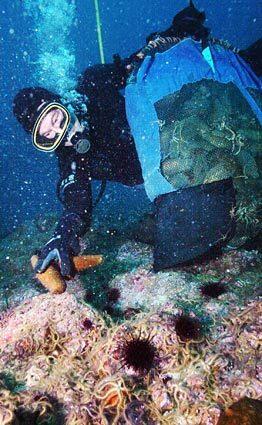
Terry Herzik collects a sea cucumber on the west side of Santa Barbara Island. Herzik, 61, dives for sea urchins and sea cucumbers, considered delicacies in Asia. He thought he’d be out of commercial diving years ago. (Bob Chamberlin / Los Angeles Times)
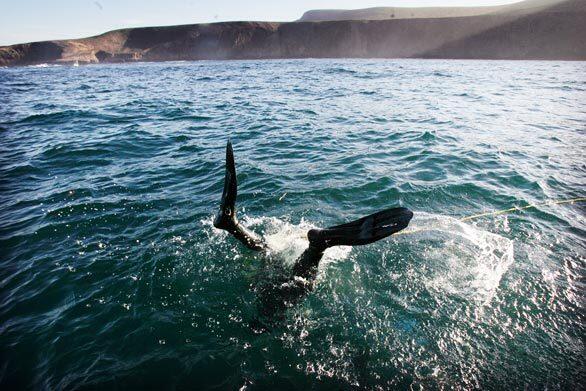
Terry Herzik begins his descent on the west side of Santa Barbara Island. This is no job for an aging body. Divers spend hours in icy water, dragging 300-pound bags of sea urchins and sea cucumbers from the sea floor. (Bob Chamberlin / Los Angeles Times)
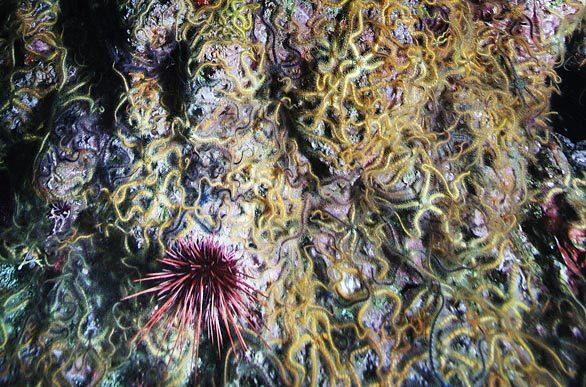
Hundreds of brittle stars and a sea urchin occupy a bit of rock on the west side of Santa Barbara Island. (Bob Chamberlin / Los Angeles Times)
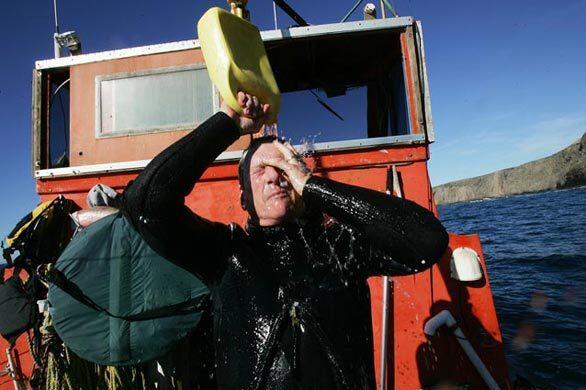
Terry Herzik pours warm water into his exposure suit to brace himself against the 52-degree water around Santa Barbara Island. (Bob Chamberlin / Los Angeles Times)
Advertisement
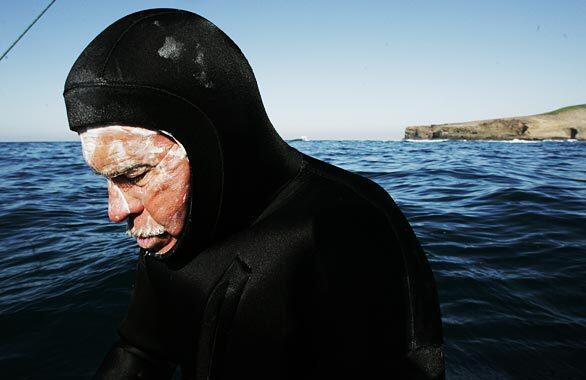
His face covered with hair conditioner, Gary Thompson, Herzik’s co-diver, prepares to descend. He uses the slippery substance to get his unusually heavy exposure suit over his head. (Bob Chamberlin / Los Angeles Times)
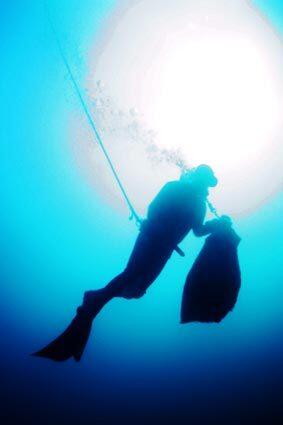
Terry Herzik ascends with a bag of sea cucumbers on the west side of Santa Barbara Island. The cucumbers are vile-looking creatures -- the size of their namesake vegetable, wormy in texture, with no eyes and covered with black-tipped bumps. They have no defenses against predators, but almost none will deign to eat them. (Bob Chamberlin / Los Angeles Times)
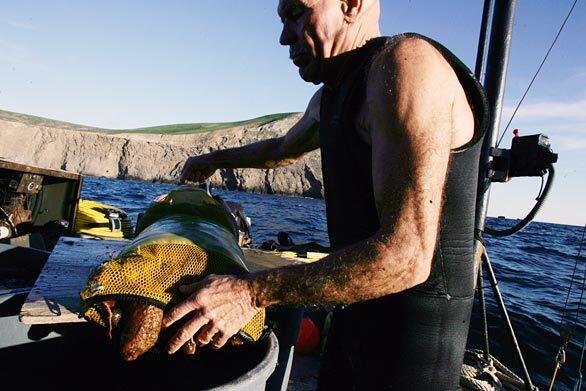
Gary Thompson dumps a bag of sea cucumbers into a barrel after a dive. As a walk-on diver, the slender, compact 65-year-old brings in his own haul and pays a cut to Herzik. (Bob Chamberlin / Los Angeles Times)
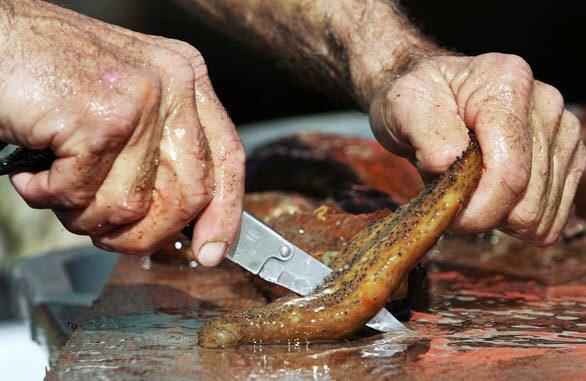
Gary Thompson guts sea cucumbers to prepare them for sale. In China, sea cucumber flesh is dried as food and considered to have healing qualities. (Bob Chamberlin / Los Angeles Times)
Advertisement
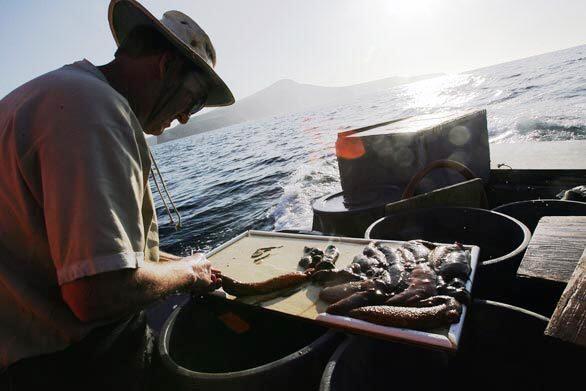
Terry Herzik cleans one of the four barrels of sea cucumbers he collected off Santa Barbara Island, in the background. (Bob Chamberlin / Los Angeles Times)
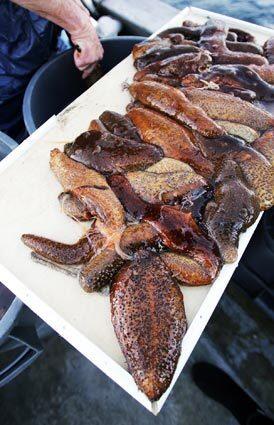
Terry Herzik prepares sea cucumbers for market. Cukes are a gamble this time of year. At the end of every fall they go into hiding to fulfill a quirky ritual, in which they eject their internal organs and grow new ones. (Bob Chamberlin / Los Angeles Times)
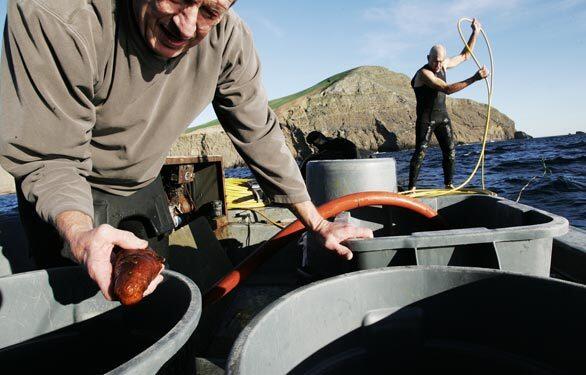
Terry Herzik examines a sea cucumber as Gary Thompson rolls up breathing tubing. Their patch of the global economy is the four Channel Islands southwest of Los Angeles. Today they were working Santa Barbara Island, about 50 miles off San Pedro. (Bob Chamberlin / Los Angeles Times)
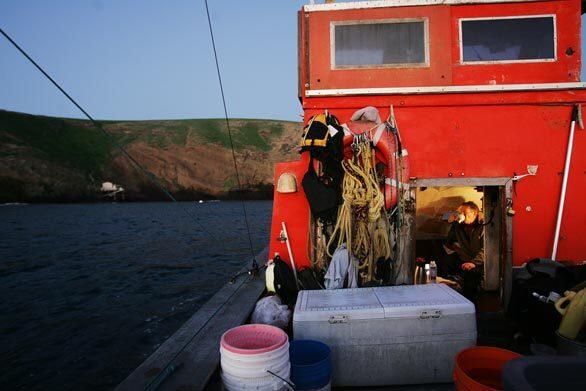
At sunrise, Terry Herzik has a cup of coffee aboard the Sunstar on the east side of Santa Barbara Island. He anchored there overnight to stay out of the chop and the wind. (Bob Chamberlin / Los Angeles Times)
Advertisement
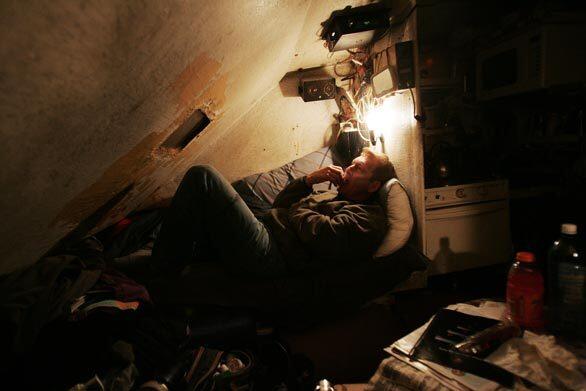
Terry Herzik has a bite to eat in his bunk aboard the Sunstar while Gary Thompson pilots the boat. (Bob Chamberlin / Los Angeles Times)
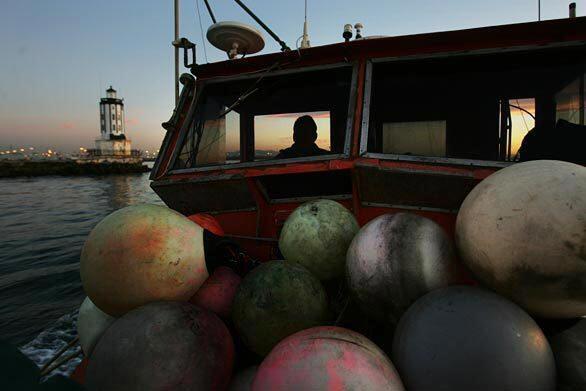
Terry Herzik pilots his vessel out to sea. Fishery diving is a race against time. Divers get two hours or so underwater before they must surface and decompress for a similar spell. (Bob Chamberlin / Los Angeles Times)
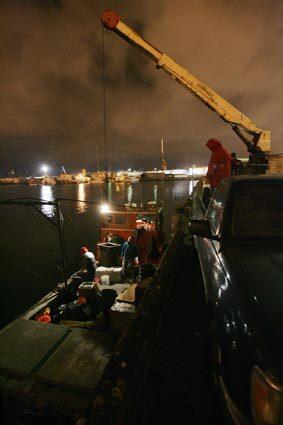
Terry Herzik watches as a barrel of sea cucumbers is hoisted by crain to a buyer’s waiting pickup truck near midnight. (Bob Chamberlin / Los Angeles Times)
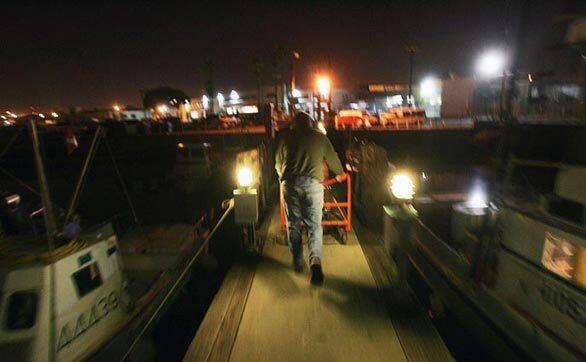
Terry Herzik trundles a dockside cart to load equipment onto his boat at about 4:30 a.m. Like many who flocked to commercial diving as it boomed in the 1970s and ‘80s, he is now heading into his senior years on a youthful dream that has grown more complicated with age. (Bob Chamberlin / Los Angeles Times)






